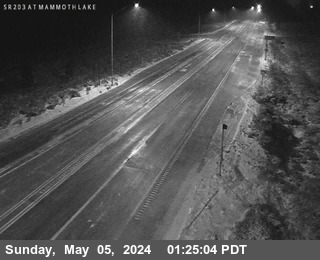Brought to you by Howard Sheckter
Warmer, Milder Weather On The Way…..MJO Still Rising!
Wednesday January 12, 2011
The key feature in the western hemispheric pattern over the next 7 days is the big Bering Sea-Alaskan block that is retrograding westward toward and over Siberia, Russia. This teleconnects well with the west coast rising heights forecasted by the global models. This should give us a nice period of January thaw the second half of this week into early next week. Temperatures will climb to the mid 60s in Bishop by Saturday and into the 40s beginning today for Mammoth. There will still be a few periods of over-running about Thursday/NGT and again some clouds Sunday. The models only give us a scant of QPF Thursday/Ngt (.01 to .02)
Here is your high temperature forecast for Mammoth through weeks end. This is for the Town of Mammoth (TOML). Wed43/Thur43/Fri44/Sat45/Sun48/Mon48/Tuesday48.
Night time lows will be in the 20s for the most part this week until Sunday and Monday morning when they may only get down into the low to mid 30s…hence the January Thaw!
Good time to plan to break up ice dams and ice and snow off areas of decks and walk ways as the ice will be much more easily removed by this weekend!
Longer Range: (Next Week)
The models sharpen the west coast, upper ridge the early part of next week. All models have an inside slider type system that will dive into the Rockies mid week. The warm temps over the Eastern Sierra for the time being is expected to hold through next Tuesday afternoon. However an abrupt change in the pattern will send a blast of cold Arctic air into the Great Basin a week from this Wednesday. An Arctic Front is expected to enter the Pacific Northwest Tuesday and move through Mammoth Thursday morning. This will probably bring increasing winds as early as Tuesday night with stronger winds Wednesday into Thursday morning. There may be a period of up-slope snowfall Wednesday night. Strong “convergence aloft” in the left rear entry area of the upper jet and NVM should build a pretty strong surface high over Idaho (1040mb)with a tightening NE gradient along the Eastern Slopes of the Sierra. Strong up slope North Easterlies? It appears to be a quick event in any case. What is additionally interesting is that this is but a very small chunk of modified Arctic air compared to the monster frigid Arctic air mass that is forecasted to come slamming down from the Arctic later next week over the North-Eastern US. It appears to be the Coldest Arctic Air Mass in a long time. The coldest air will effect areas like the Great Lakes region south and eastward. A 500mb-1000mb thicknesses pool in the Mid 460s is impressive over Central Canada Thursday afternoon a week away! Today’s 12z Wednesday GFS has the 474Dm Thickness clipping the northern Great Lakes area a week from this Friday…then heading for upstate NY into New England……..Brutal!
MJO:
Still Intensifying and even growing stronger then forecasted for this time. The Dynamic models are adjusting.
What does the MJO (Madden Julian Oscillation) do to the pattern over the pacific? It depends upon where it is, and how strong it is. As the “enhanced portion” (rising air….enhanced rainfall) moves into the western pacific, it modulates the westerlies. The GFS should begin to show a change in the pattern later this month.
If it all works out…..As the enhanced state of MJO moves into the Western Pacific, (About the 25th of January} watch for strong amplification of a Trof-Ridge pattern with a large jump in amplitude in the west coast ridge. This feature should then build north up over Alaska with time….eventually becoming a large cut off upper Anti-Cyclone over AK.
Phase space 7 into 8 the Atmosphere is in the Pseudo El Nino State. Expect a lower latitude upper Jet splitting off and under cutting the westerlies during the mature stage with the chance that a precip event will come to the west coast. Timing….sometime between the end of January and the first week of February. Good reading below…..
Remember that there is no guarantee at this time that this will happen. It is still quite speculative. However….this will be a lot of fun to follow!
MJO Education:
1. http://www.cpc.ncep.noaa.gov/products/precip/CWlink/MJO/MJO_1page_factsheet.pdf
2. http://www.cpc.ncep.noaa.gov/products/precip/CWlink/MJO/MJO_summary.pdf
Specifically in the #2 PDF file, there are some excellent visuals toward the very end of the file.
Dr. Howard and the Dweebs…………………………………….:-)
————————————————-
Reference Glossary of Weather Terms
Disclaimer: I have been a hobbyist meteorologist for over 30 years here in the Mammoth area and I do this for my personal enjoyment. The National Weather Service saves lives every day . . . I do not. When making important planning decisions please use information provided by the National Weather Service as they are the most knowledgeable and accurate information source available today.




